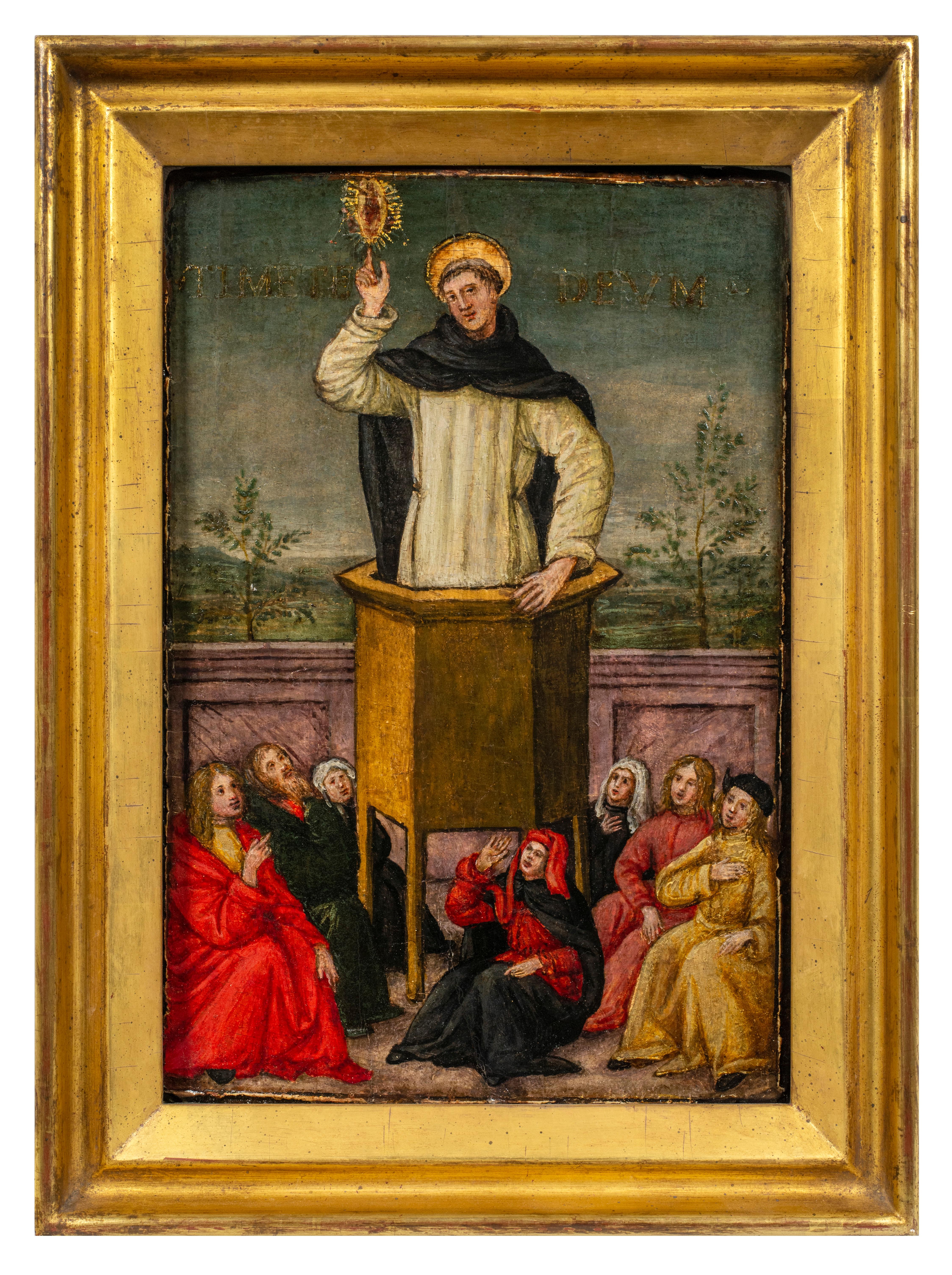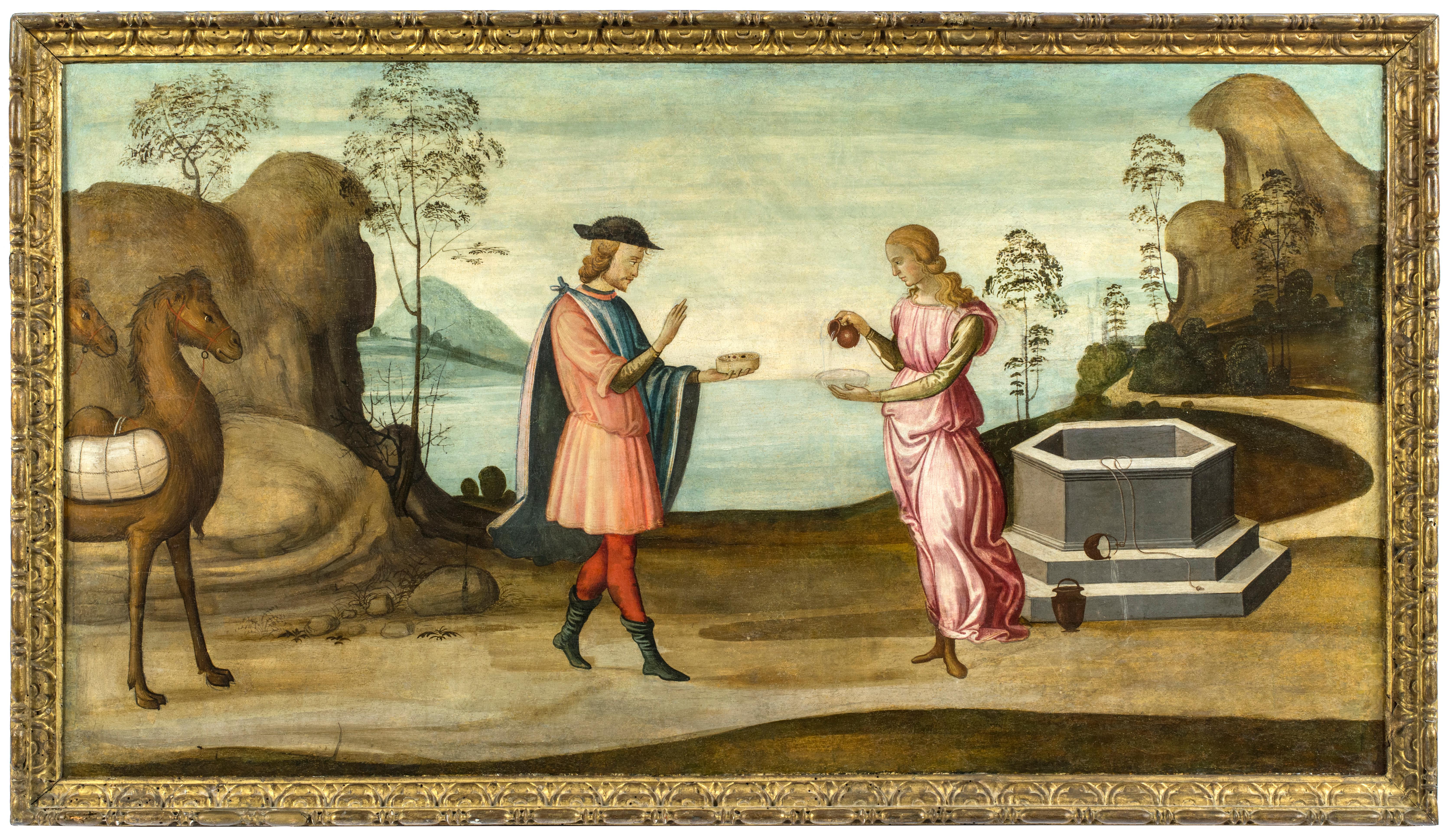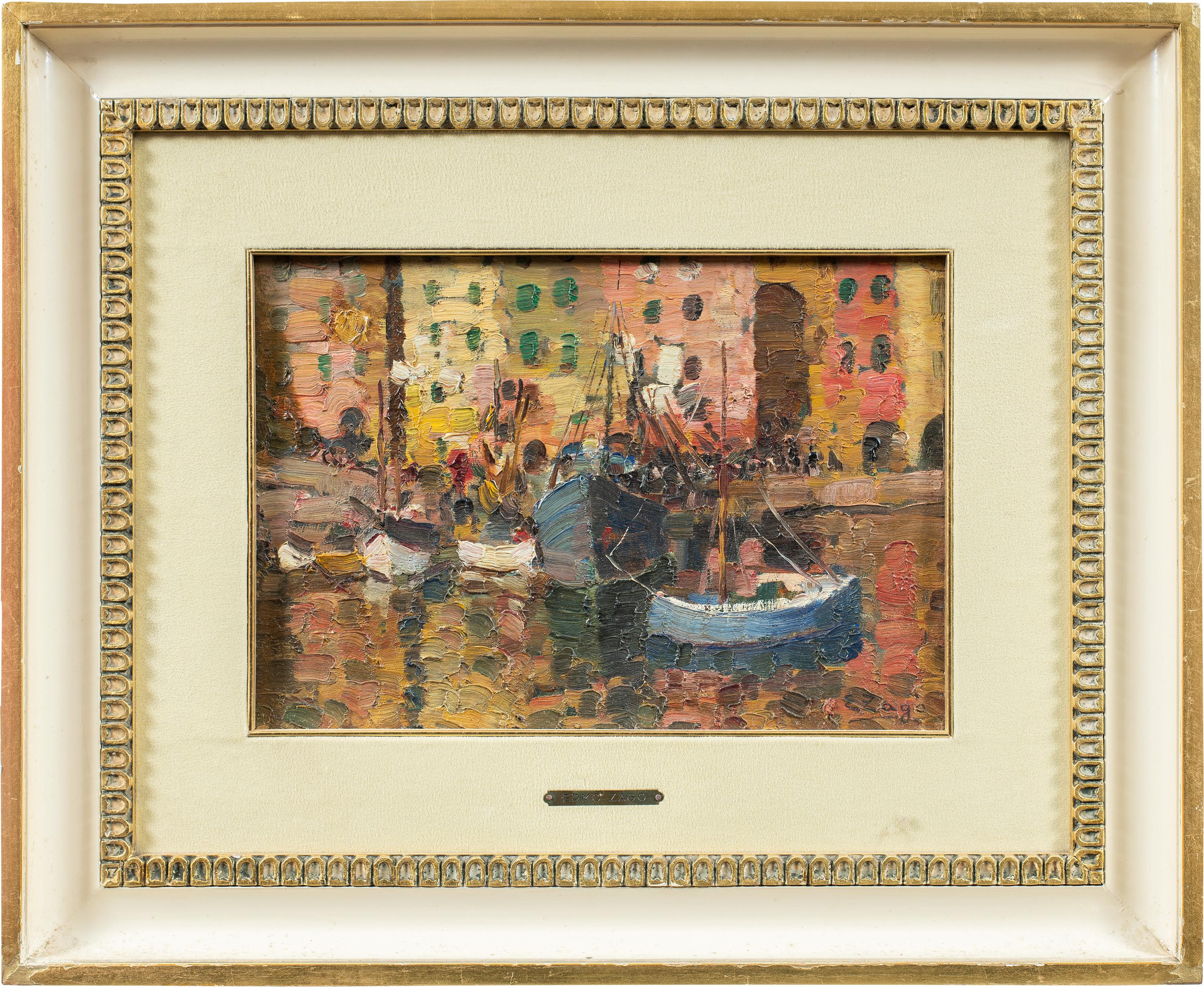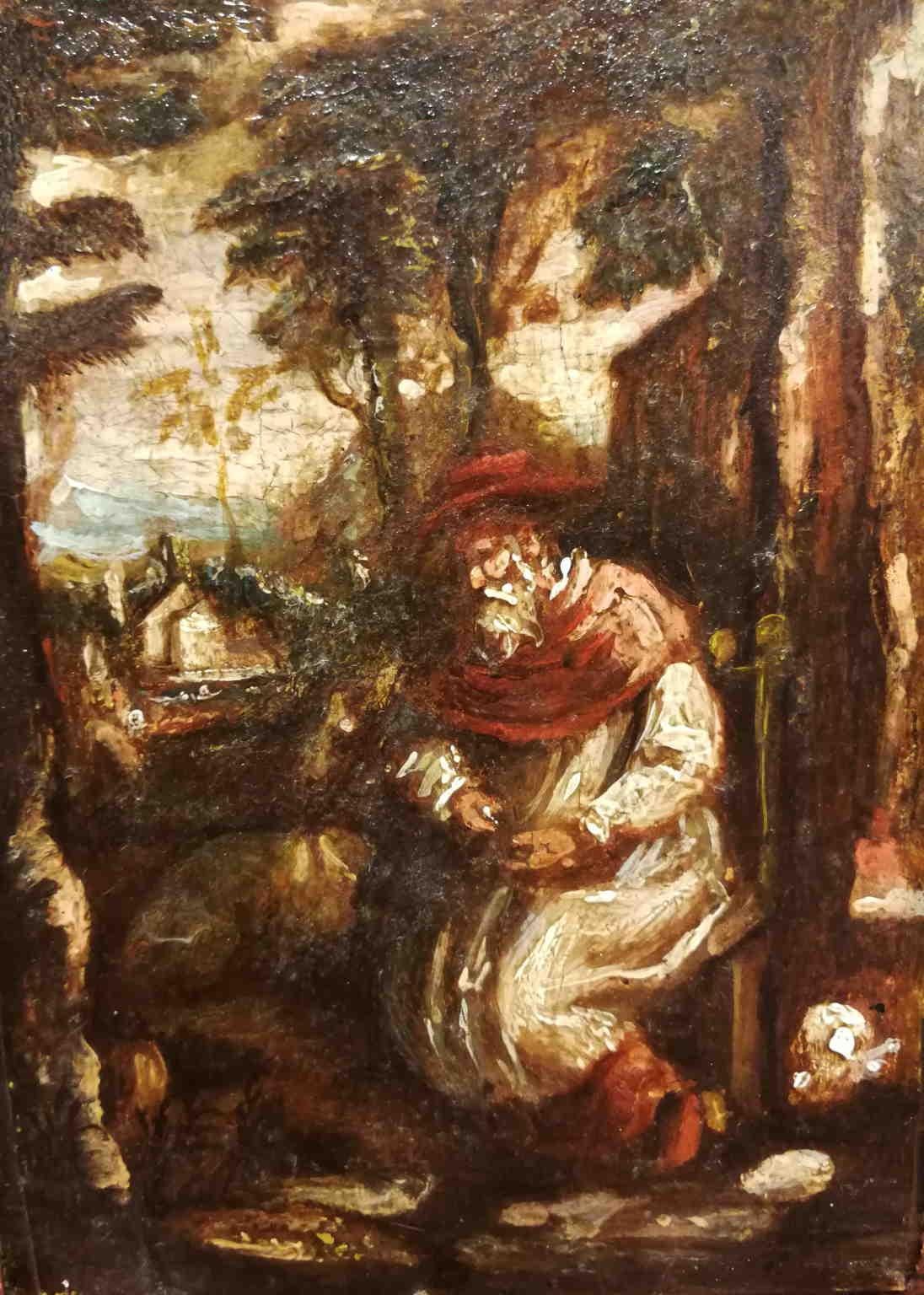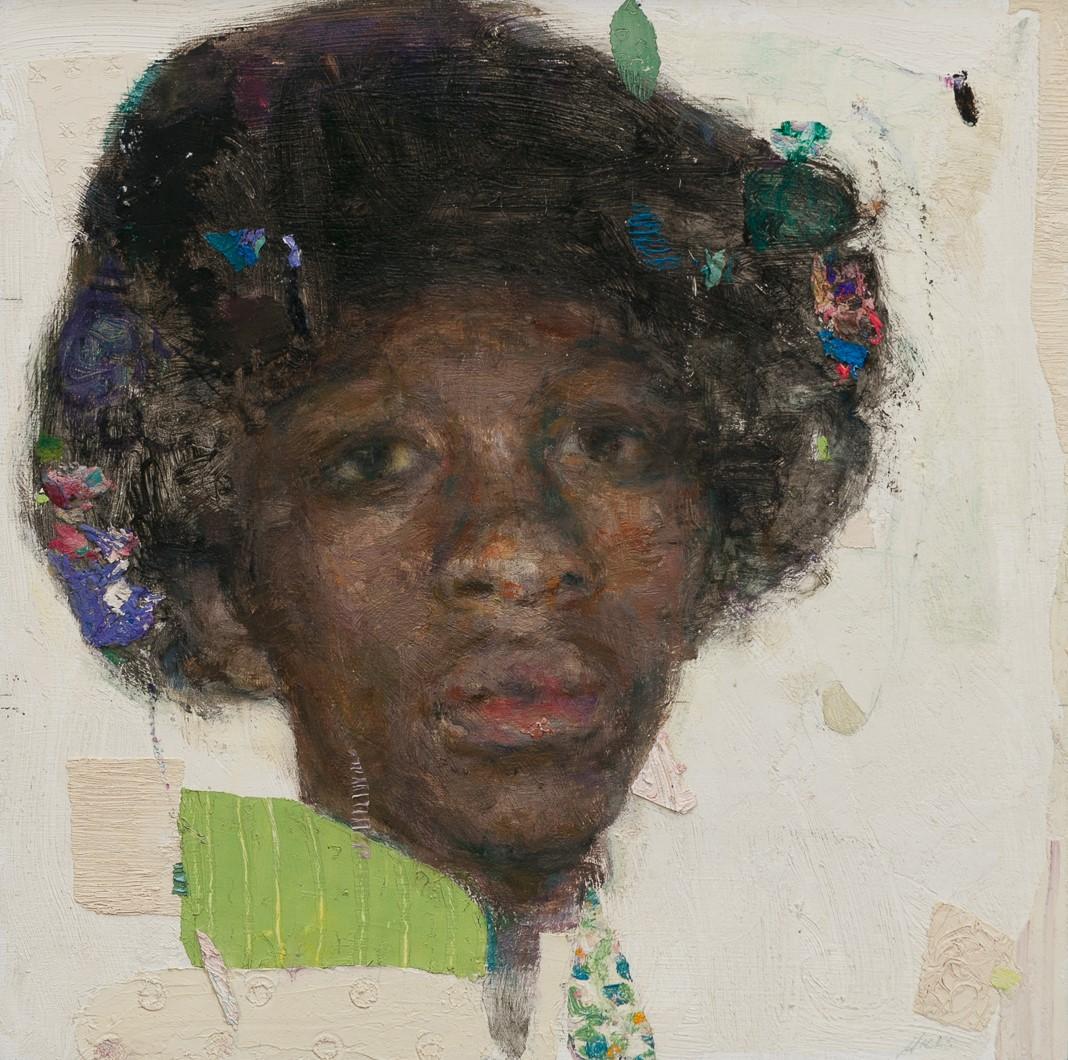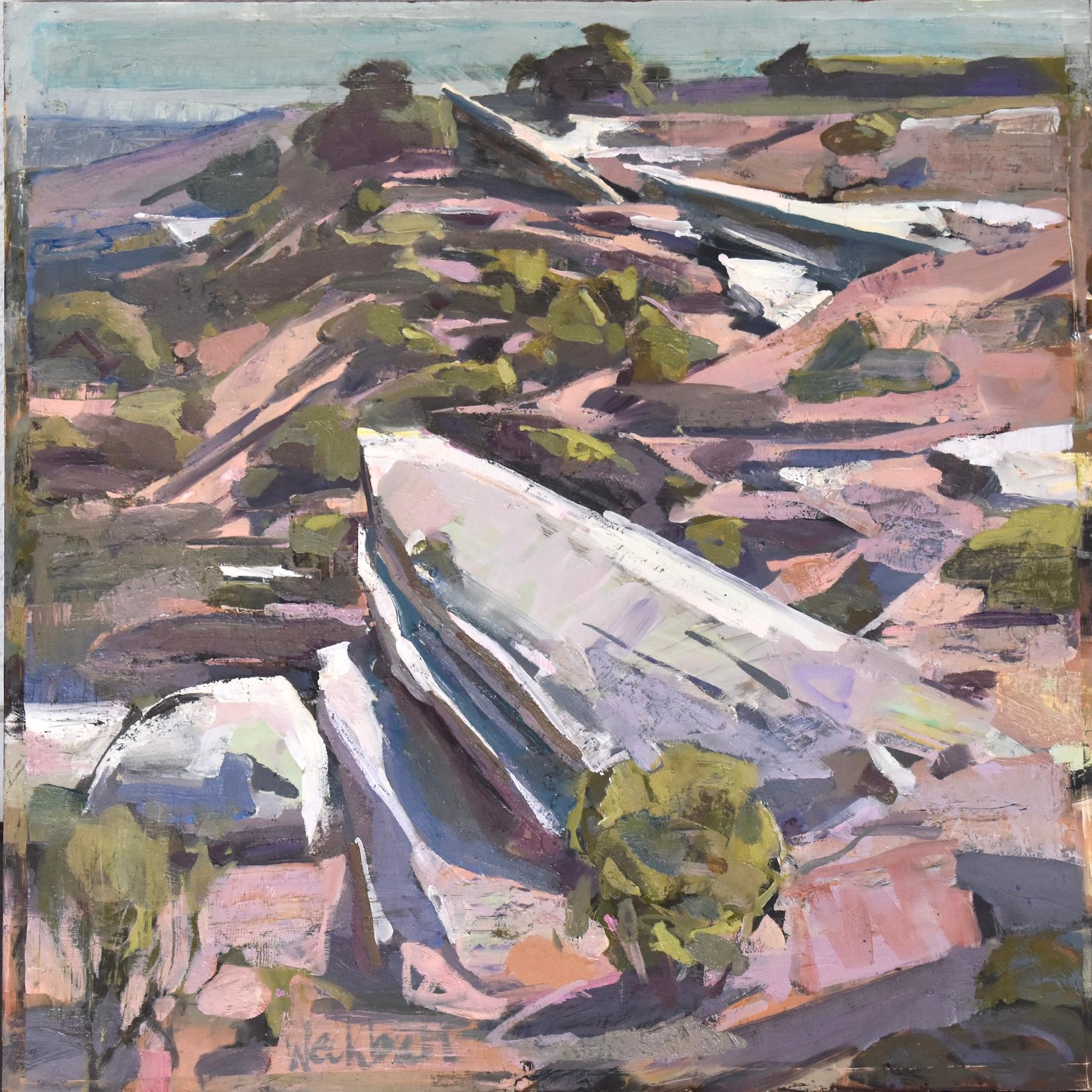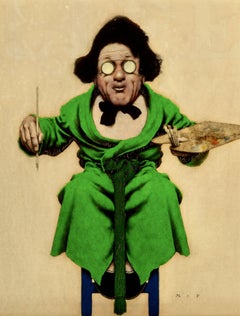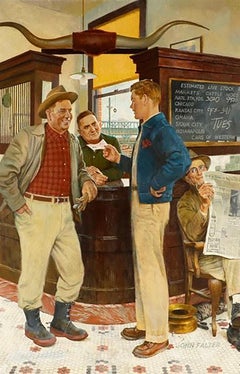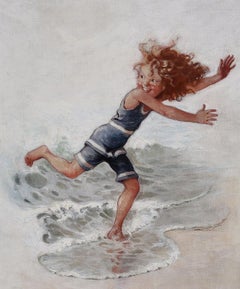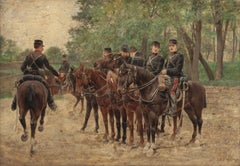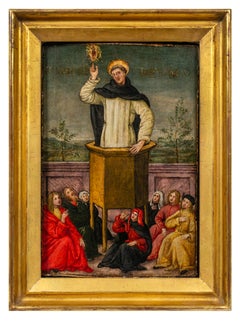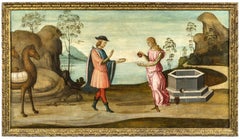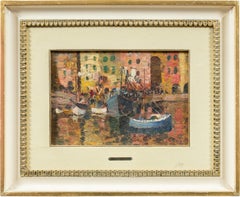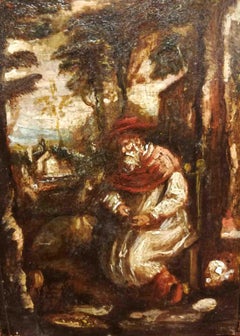Items Similar to My Duty Towards my Neighbor, and My Duty Towards God (diptych)
Want more images or videos?
Request additional images or videos from the seller
1 of 14
Maxfield ParrishMy Duty Towards my Neighbor, and My Duty Towards God (diptych)1898
1898
About the Item
Overall Dimensions, including artist frame: 54 x 80 in.
Each Painted Panel: 33 x 24 in.
Medium: Oil on Panel
Signature: Each panel signed and dated
Literature:
Coy Ludwig, Maxfield Parrish, New York, 1973, p. 153, nos. 194-95, illustrated
Alma Gilbert, Maxfield Parrish: The Masterworks, Berkeley, California, 1992, p. 116 (as My Duty Towards God and My Neighbor)
Laurence S. Cutler, Judy Goffman Cutler, Maxfield Parrish and the American Imagists, Edison, New Jersey, 2004, p. 299, mentioned
This diptych was commissioned for the Mrs. Parsons Chapel at Trinity Episcopal Church in Lenox, Massachusetts. Art historian Coy Ludwig observed the works possess an "interesting Pre-Raphaelite quality" reminiscent of the American Arts & Crafts Movement. While the faces and costumes evoke the styles of Rossetti and Waterhouse, the frame's design, colors, and lettering reflect the influence of the Arts and Crafts aesthetic. Parrish clearly intended a fully integrated artistic expression, recognizing that independent framing would have compromised his intended overall effect.
The overall composition, including its artist-designed frame, reveals Parrish's working methods and his natural artistic inclinations. His initial architectural interests, evident in his early education, made this site-specific commission a natural fit. The deliberate selection of an architectural space within an existing structure further underscores his innate interest in architecture. Moreover, these intimate murals exemplify Parrish's early artistic approach, characterized by a flat, linear style directly informed by his poster and cover designs, which relied on strong contours and silhouettes for impactful visual communication.
- Creator:Maxfield Parrish (1870-1966, American)
- Creation Year:1898
- Dimensions:Height: 54 in (137.16 cm)Width: 80 in (203.2 cm)
- Medium:
- Period:
- Condition:
- Gallery Location:Fort Washington, PA
- Reference Number:Seller: 40921stDibs: LU38435782552
About the Seller
5.0
Recognized Seller
These prestigious sellers are industry leaders and represent the highest echelon for item quality and design.
Gold Seller
Premium sellers maintaining a 4.3+ rating and 24-hour response times
Established in 1995
1stDibs seller since 2016
123 sales on 1stDibs
Typical response time: 1 hour
- ShippingRetrieving quote...Shipping from: Fort Washington, PA
- Return Policy
Authenticity Guarantee
In the unlikely event there’s an issue with an item’s authenticity, contact us within 1 year for a full refund. DetailsMoney-Back Guarantee
If your item is not as described, is damaged in transit, or does not arrive, contact us within 7 days for a full refund. Details24-Hour Cancellation
You have a 24-hour grace period in which to reconsider your purchase, with no questions asked.Vetted Professional Sellers
Our world-class sellers must adhere to strict standards for service and quality, maintaining the integrity of our listings.Price-Match Guarantee
If you find that a seller listed the same item for a lower price elsewhere, we’ll match it.Trusted Global Delivery
Our best-in-class carrier network provides specialized shipping options worldwide, including custom delivery.More From This Seller
View AllA Dark Futurist
By Maxfield Parrish
Located in Fort Washington, PA
Medium: Oil on Paper Laid on Panel
Signature: Signed Lower Right
Initialed lower right: M.P.
Signed on the reverse: Maxfield Parish
Initialed and numbered by the artist's son on the reverse: M.P. Jr. / No. 68.
When Maxfield Parrish painted the comical A Dark Futurist in 1923 for Life magazine, he had already established himself as America's leading book and magazine illustrator. His early artwork for children's classics like L. Frank Baum's Mother Goose in Prose (1897), Kenneth Grahame's Dream Days (1900), and Eugene Field's Poems of Childhood (1904) popularized his signature atmospheric settings, cobalt blue-and-gold palette, and dreamy figures inhabiting magical worlds. Likewise, his covers for Century, Collier's, Harper's Bazaar, Ladies' Home Journal, Life, and Scribner's Magazine were highly desirous and instantly recognizable, often more stylized than his book imagery; no other journal illustrator could match Parrish's winning combination of precise draftsmanship, strong graphic design, and amusing characters.
According to David Apatoff, Art Critic, The Saturday Evening Post, "Parrish abandoned his customary heavy details and rainbow colors to present a bolder, more high-contrast design silhouetted against a stark white background - a treatment more suitable for a modern magazine cover vying for attention on a crowded newsstand.
A Dark Futurist is silhouetted against a white field with no background or details to prop it up. The composition is carefully centered with only differences in the hands and the artist's necktie to break the symmetry. These are crucial to the success of the design.
Just as important as Parrish's clean, high-contrast style in these pictures is the refreshing humor and sophistication in content, which is usually absent from Parrish's fairytale paintings.
A Dark Futurist shows us a different kind of modernism. Parrish steps out of his timeless fairy tales to tweak one of the most incendiary artistic movements of his day. Futurism, with its militant manifesto and its outspoken artists, was all the rage in Europe. Parrish pokes them, showing a "dark" and anxious futurist with pursed lips and thick glasses, poised to paint but not exactly sure of, or optimistic about, what the 'future' will hold. This suggests that Parrish was alert to, and had opinions about, current events of the day - something one might never guess from his usual subject matter."
In his early Collier's illustrations, Parrish also developed memorable themes that he would return to in his 1920s magazine work. One of his most popular characters was the "seer," or man with keen visual powers, most often depicted as an artist, but also appearing as a tourist, scientist, and philosopher. Parrish's seer was recognizable by particular physical attributes: round glasses, indicating his visual and analytical acuity, and an overcoat and/or hat signifying his role as observer of the outside world.
A Man of Letters, sold last year at Heritage Auctions, was one of the first Life covers Parrish rolled out for Gibson, and he repeated the character of the artist-seer, emphasizing the comic spin, for two later editions: A Dark Futurist (Life, March 1, 1923) captures a Parrish-like artist in foggy round glasses and a long green coat...
Category
1920s Figurative Paintings
Materials
Paper, Oil, Panel
Price Upon Request
FFA Student with his Father
By John Philip Falter
Located in Fort Washington, PA
Medium: Oil on Panel
Signature: Signed Lower Right
An FFA student with his father receiving a check for his first delivery of steers to the Omaha stockyard.
Category
20th Century Figurative Paintings
Materials
Oil, Panel
Little Girl Running from Waves, Original cover for The Saturday Evening Post
By Sarah S. Stilwell Weber
Located in Fort Washington, PA
Original cover illustration for The Saturday Evening Post magazine, published July 23, 1921.
Despite her mentor’s advice, Stilwell Weber married in 1908, and her daughter Jane was b...
Category
1920s Figurative Paintings
Materials
Oil, Linen, Panel
French Military on Horseback
By Jules Delaunay
Located in Fort Washington, PA
Date: 1893
Medium: Oil on Panel
Dimensions: 14.50" x 21.00"
Signature: Signed and Dated Lower Right: J. Delaunay. 1893
Category
1890s Figurative Paintings
Materials
Oil, Panel
Couple in a Horse-Drawn Carriage
By William Henry Dethlef Koerner
Located in Fort Washington, PA
Date: 1923
Medium: Oil on Panel
Dimensions: 24.00" x 36.00"
Category
1920s Figurative Paintings
Materials
Oil, Panel
King Louis
By Howard Pyle
Located in Fort Washington, PA
Medium: Oil on Panel
Signature: Signed "H. Pyle" Lower Right and Inscribed Indistinctly On the Reverse
"At the same time he extended toward King Louis the ...
Category
1890s Figurative Paintings
Materials
Oil, Panel
£37,609
You May Also Like
St. Vincent Ferrer Preaching to the People of Salamanca
Located in New York, NY
Provenance:
Private Collection, New Jersey
The present painting depicts Saint Vincent Ferrer preaching from a raised pulpit to a group of seven peopl...
Category
15th Century and Earlier Renaissance Figurative Paintings
Materials
Oil, Wood Panel
Rebecca at the Well
Located in New York, NY
Provenance:
Dr. James Henry Lancashire, Manchester-by-the-Sea, Massachusetts, by 1925; probably by descent to:
Private Collection, Cumberland Foreside, Maine, until 2018
This unpublished panel is a characteristic work of the Master of the Apollo and Daphne Legend, an anonymous Florentine painter in the circle of Bartolommeo di Giovanni, Domenico Ghirlandaio, and Sandro Botticelli. The artistic personality of the Master of the Apollo and Daphne Legend was independently recognized by Everett Fahy and Federico Zeri at roughly the same moment in time. Fahy originally dubbed this artist the Master of the Ryerson Panels but later adopted Zeri’s name for the artist, which derives from his eponymous works from the Samuel H. Kress collection (Figs. 1-2). Fahy posited that the artist was most likely a pupil of Ghirlandaio active from roughly 1480 to 1510, and that he may be identifiable with one of Ghirlandaio’s documented pupils to whom no works have been securely attributed, such as Niccolò Cieco, Jacopo dell’Indaco, or Baldino Baldinetti. The present painting was first attributed to this master by Everett Fahy in 1989, who became aware of its existence only after publishing his definitive studies on the artist.
The surviving body of work by the Master of the Apollo and Daphne Legend is largely composed of series of panels treating the same theme. In addition to the works illustrating the legend of Apollo and Daphne, there are also series on the themes of Susanna and the Elders and the story of Saint Joseph, among others. The subject of the present panel is drawn from Genesis 24, the story of Isaac. It is possible that our painting relates to another work by the artist depicting the Sacrifice of Isaac formerly in the collection of E. A. McGuire in Dublin, Ireland (Fig. 3), and that these two panels were originally part of a decorative scheme based on the story of Isaac.
Although the Master’s paintings of this type have traditionally been considered painted fronts of wedding chests, known as cassoni, the scale of these paintings and the fact that they are often part of a series indicates that they are more likely spalliera panels—paintings set into furniture or the wainscoting of a room. The biblical episode depicted in this painting centers on the theme of marriage, which suggests that this work was likely commissioned for the domestic interior of a newly married couple. The Master has transcribed into paint even the minute details of this Old Testament story, in which Abraham sends a servant to travel by camel to the land of his father and seek out a wife for his son Isaac. The servant is here shown at the well...
Category
15th Century and Earlier Old Masters Figurative Paintings
Materials
Oil, Tempera, Wood Panel
Erma Zago (Venetian vedutist painter) - 20th century landscape painting - Genoa
By Erma Zago
Located in Varmo, IT
Erma Zago (Bovolone 1880 - Milan 1942) - The port of Genoa.
24.5 x 35.5 cm without frame, 50 x 61 cm with frame.
Antique oil painting on wood...
Category
Early 20th Century Art Nouveau Figurative Paintings
Materials
Oil, Panel
£862 Sale Price
44% Off
Free Shipping
Venetian Baroque religious figurative painting from the 17th century
Located in Florence, IT
This painting (oil on paper applied to wood panel, 18 x 12, 5 cm) is a valuable example of the production of small-format works, thus aimed at a private audience, which was very comm...
Category
Mid-17th Century Baroque Figurative Paintings
Materials
Paper, Oil, Wood Panel
"Silent Street" Oil Painting
By Ron Hicks
Located in Denver, CO
Ron Hick's (US based) "Axiomatic Appeal" is an original, handmade oil painting that depicts an impasto rendering of a male figure with dark hair and an abstracted background.
Ron Hi...
Category
2010s Impressionist Portrait Paintings
Materials
Oil, Panel
"Galisteo Basin" (2022), Original Oil Painting by Kevin Weckbach
By Kevin Weckbach
Located in Denver, CO
Kevin Weckbach's (US based) "Galisteo Basin" is an original, hand-made oil painting that depicts a landscape with craggy rocks and bushes.
Artist Statement:
"Subject matter to me i...
Category
2010s American Impressionist Landscape Paintings
Materials
Oil, Panel
Recently Viewed
View AllMore Ways To Browse
Antique God
Antique Silhouette Frames
Antique Framed Silhouettes
Lenox American
Berkeley Poster
Parrish Maxfield
Antique Church Architectural Antiques
80s Poster
Antique Lenox
Brown Coy
No Pasaran
Nora Ulreich
Norbert Goeneutte
Norman Lindsey
Octave Cartel
Oil Lamp From Queen Mary Ship
Oil Painting Of Men Drinking At A Pub
Original Movie Posters The Outsiders
